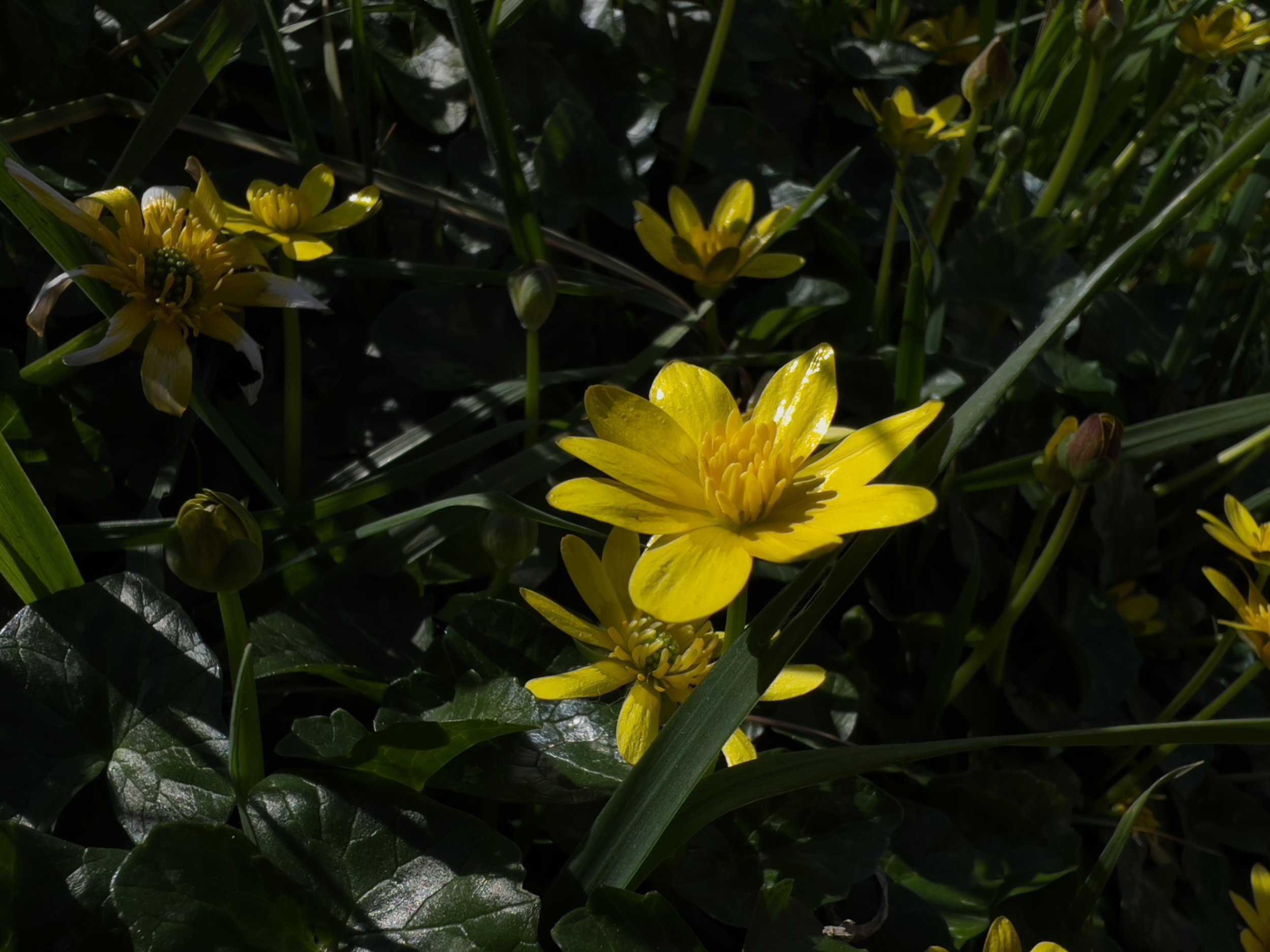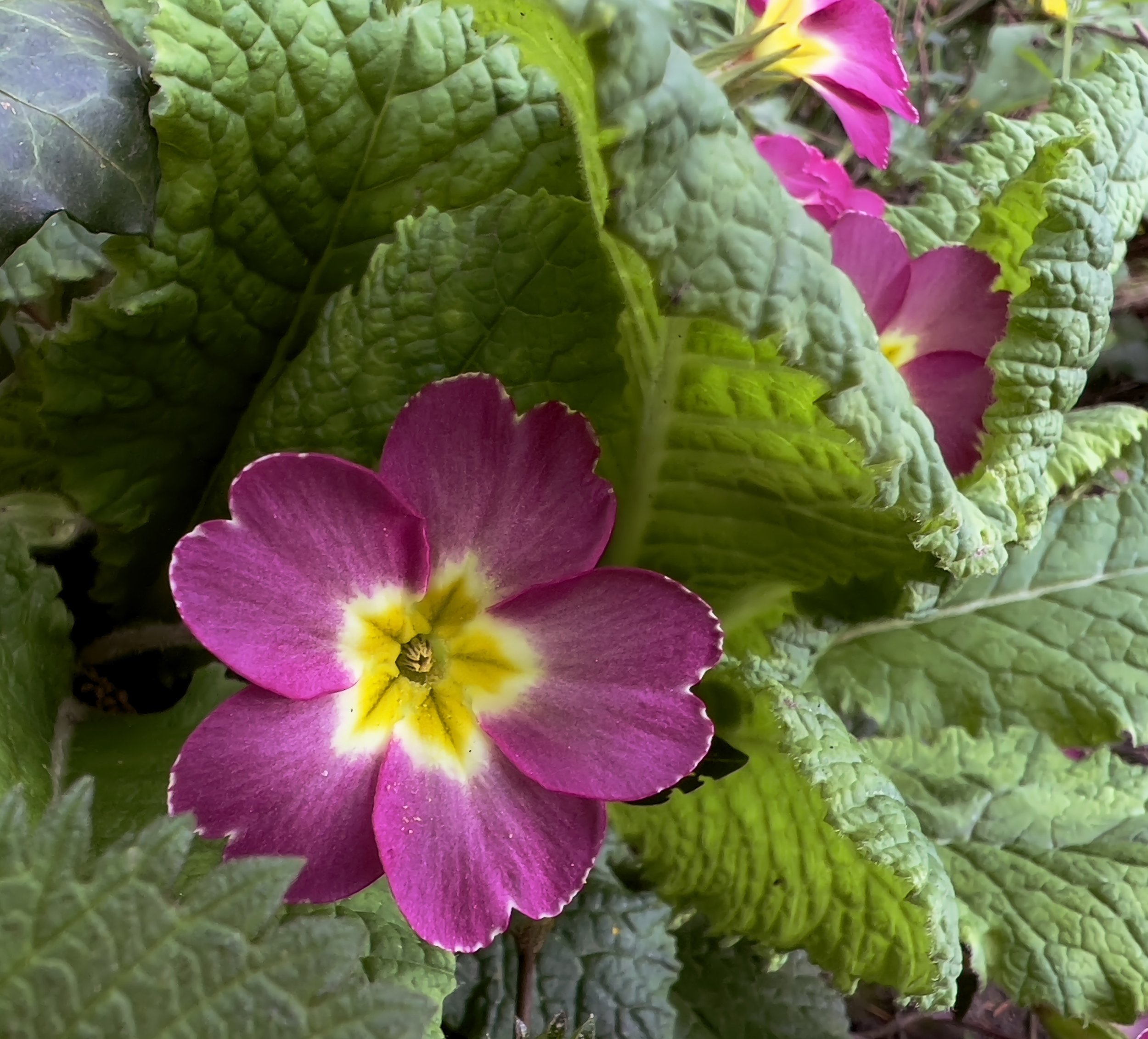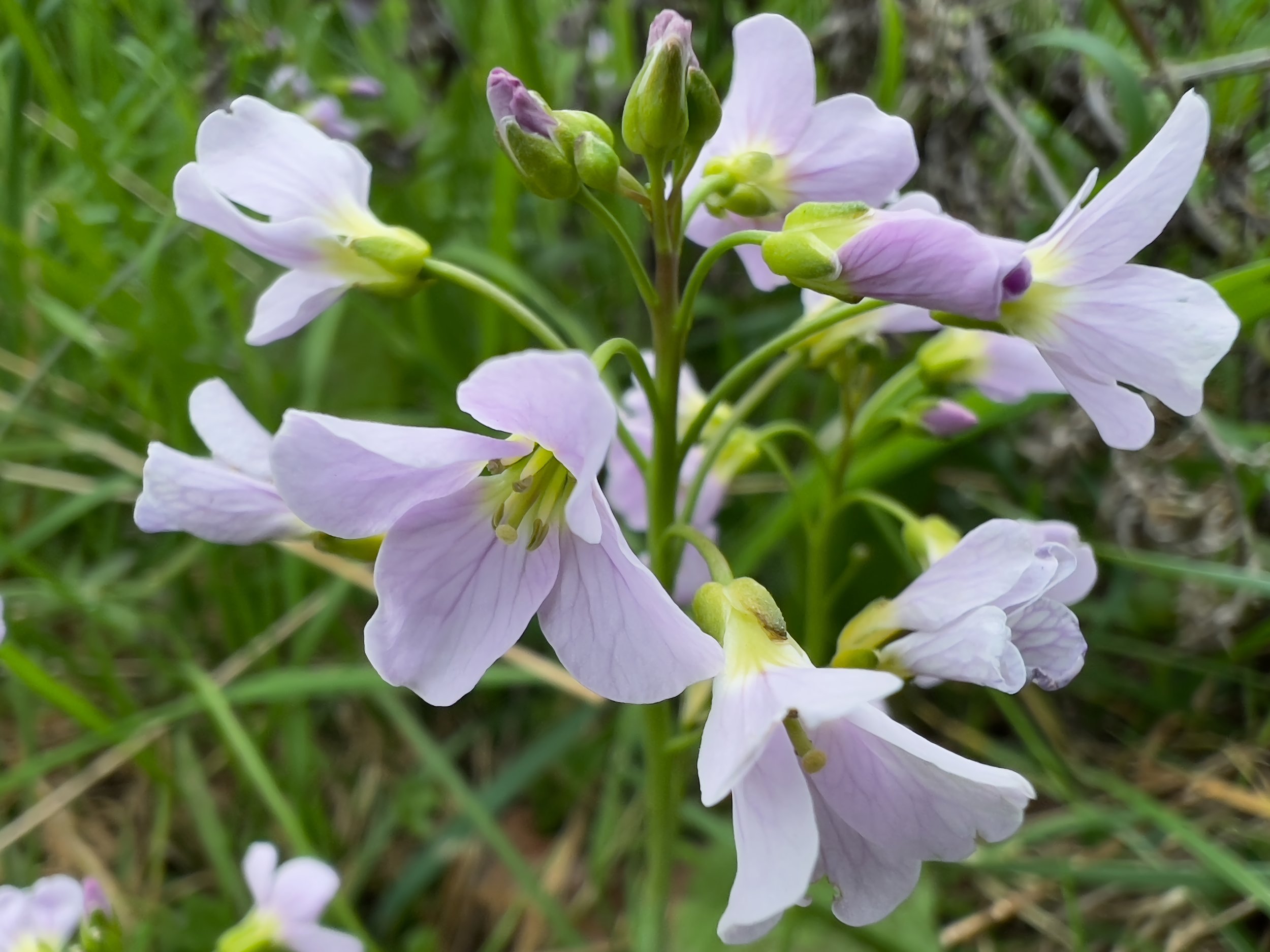Wildflowers
England, like everywhere else in the world, is inundated with natural beauty and wildflowers are a big part of that.
This particular flower is a Ficaria. It was growing naturally on a spring day, by the side of a local road.
Ficaria verna, commonly known as lesser celandine or simply ficaria, is a low-growing perennial herbaceous plant native to Europe and Western Asia. It belongs to the Ranunculaceae family, which comprises other well-known species like buttercups and anemones. The plant is often found in moist, shaded habitats such as woodlands, hedgerows, and along streams or riverbanks.
The ficaria's vibrant yellow flowers, consisting of 7 to 12 petals, are among the first to bloom in early spring, creating a cheerful carpet of color in the landscape. The flowers open during sunny days and close at night or during cloudy weather, a unique feature that protects the plant's reproductive organs from adverse conditions.
The heart-shaped or kidney-shaped leaves of the ficaria are glossy and dark green, forming a basal rosette around the flower. The plant is known to reproduce both sexually through seeds and asexually through bulbils, small structures that develop at the leaf axils and can give rise to new plants.
Historically, lesser celandine was used in traditional medicine for its purported healing properties, particularly for treating hemorrhoids and skin conditions like warts or rashes. The plant contains high levels of vitamin C, which was utilized to prevent scurvy in the past.
However, ficaria has become invasive in some regions, like North America, due to its rapid growth and ability to outcompete native vegetation. Gardeners and conservationists are encouraged to manage its spread responsibly to maintain local ecosystems and biodiversity. Despite these challenges, the plant remains a delightful herald of spring and a harbinger of warmer days ahead.
This Primula was by the side of the road near to where I live.
Primulas are a genus of flowering plants that belong to the family Primulaceae. The genus includes around species, which are native to the temperate regions of the Northern Hemisphere. Primulas are popular garden plants due to their attractive flowers and easy-to-grow nature.
Primulas are herbaceous perennials. They can grow up to 30cm tall and produce leaves and flower stems that bear clusters of brightly coloured flowers. The flowers can be pink, purple, red, yellow, or white and they have a distinctive five-petaled shape.
Primulas prefer moist, well-draining soil and partial shade. They are often grown in rock gardens, woodland, or gardens as border plants. They can also be grown in containers and used as indoor plants. They propagate from seed and are relatively disease and pest-resistant, although they can be susceptible to mildew and slugs.
This wild Cuckoo Flower was located on a local nature reserve, where I visited on a windy spring day.
The cuckoo flower, also known as Cardamine pratensis, is a charming perennial plant native to Europe and Western Asia. It belongs to the Brassicaceae family, which includes species like cabbage and mustard. The plant typically grows in damp meadows, riverbanks, and woodland clearings, thriving in moist, nutrient-rich soil.
Its common name, "cuckoo flower," is attributed to the fact that its blooming period coincides with the arrival of the cuckoo bird in spring. The delicate, pale-pink to lilac flowers of the plant feature four petals and appear between April and June. These attractive blossoms are an essential source of nectar for butterflies, bees, and other pollinators.
The leaves of the cuckoo flower are pinnate, with a basal rosette and alternate stem leaves. They have a slightly bitter taste, making them a popular addition to salads and other dishes in traditional European cuisine. They are also rich in vitamin C and antioxidants, providing potential health benefits.
In folklore, the cuckoo flower has been associated with fairies and magical properties. It was once believed that picking the flowers would bring misfortune or anger the fairies. Today, the cuckoo flower is appreciated for its beauty and role in supporting biodiversity, making it a lovely addition to wildflower gardens or wetland restoration projects.



